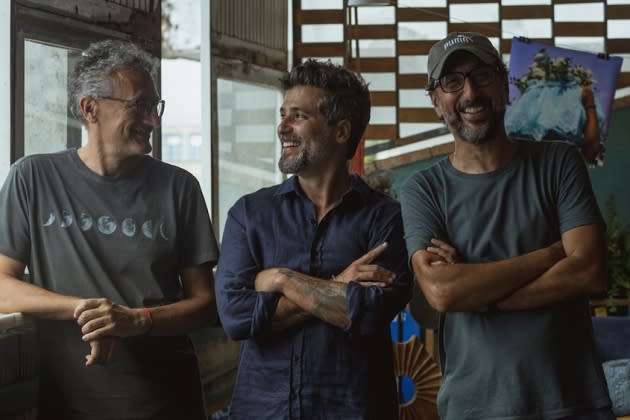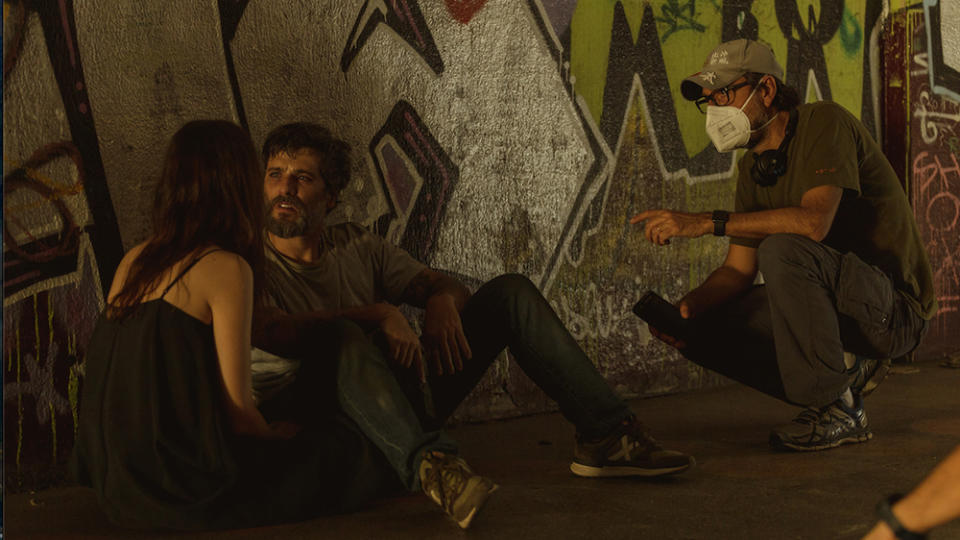Netflix’s ‘Santo,’ an Occult Crime Actioner, Broken Down by Carlos Lopez, Vicente Amorim, Bruno Gagliasso (EXCLUSIVE)
- Oops!Something went wrong.Please try again later.

Netflix is readying the debut of crime original “Santo,” which bows Sept., 16, marking a new milestone for the U.S. streaming giant – its first fiction project shot between Spain and Brazil, two of its key overseas markets.
A major undertaking, the series packs experienced partners and behind-the-camera talent. Produced by Nostromo Pictures (“Through My Window”) with support from Prodigo Films (“Invisible City”), the six-episode series is created by Carlos López (“La Embajada”) and directed by Vicente Amorim (“Yakuza Princess”), an auteur who has consolidated in the last few years as one of Brazil’s foremost action series helmers, having been attached to direct Netflix banner title “Senna.”
More from Variety
Former Netflix Exec Juan Mayne Joins Spanish Producer Nadie es Perfecto (EXCLUSIVE)
With 'Do Revenge,' Director Jennifer Kaytin Robinson Reimagines the Campy Teen Movie for Gen Z
“Santo” follows two dogged but divergent cops, Cardona (Bruno Gagliasso, “Marighella”) and Millán (Raúl Arévalo, “Marshland”), as they chase an elusive drug trafficker implicated in occult-linked crimes occurring between Salvador de Bahia, Brazil and Madrid.
The criminal is omnipresent, leading the pair to put aside their mounting differences to stay the course and make a capture.
“From the script, I felt this would be one of the most intense characters of my career. I immediately identified with Cardona’s strength and determination. This was the most visceral preparation of my life. I had to access very deep places, access my hell and find my demons to build Cardona,” stated Gagliasso.
Originality of the Occult
López crafts a narrative that includes elements of the occult, but they don’t take center stage and feel more like a tempered wave that ebbs just offshore. On the surface, the show provides all the elements of a successful crime procedural but deviates by elevating that undercurrent, providing a deeper dive into the soul and psyche of its leads.
“I was fascinated thinking of a cop thriller that consists of cops going after evil and the notion that evil is something that we don’t really see, which is something that I think happens in life,” López relayed.
“What made it very original was this new element, the occult, that Carlos brought into it. It’s actually complicated because it’s very personal. The truth is, the occult is inside of us, all of the time, and by bringing this element into the series, he made the characters a lot more interesting than they would be in a normal crime drama,” Amorim added.
A Tale of Two Cities
The dual-country production authentically fuses cultures, language, and scenery to capture the dichotomy of the worlds that have shaped Cardona and Millán. Frantic and antiquated city streets of Madrid contrast with the breezy and ebullient seaside town of Bahia. The characters fall in line with this duality, causing friction.
“I thought the best way to tell this was with two characters that live in opposite places. They’re very different characters in their relationship with their own souls, I needed them to come from very different cultures,” López said.
The production team relied heavily on each other as they hopped continents to ensure a representative depiction of each locale, navigating plans hampered slightly by a global pandemic to secure the rich, multi-cultural vision López and Amorim had for each episode.
“Bahia is quintessentially Brazilian. Because we were very aware that we had to deal with the cultural aspects with care, with respect, with a lot of research, we were never under the risk of having a foreigner’s look on Brazil, because I’m Brazilian. Not just myself, but we had the rest of the Brazilian crew. This clash of cultures was something that’s in the script, already written in a very special way. It’s something that makes this series really stand out,” Amorim said.
“I went to Spain to work on an international production, but played a Brazilian. The coolest thing is that I’m telling, in Portuguese, a story that also takes place in Brazil, with international creation and production,” Gagliasso added.
Action, and More
Action-fuelled, each scene propels an audience briskly into the next, allowing for character arcs to develop organically with a feeling the audience is ushered-along in real-time with the protagonists towards an uncertain future.
“I think that all the work from the script, from the direction and from the whole department to try to make it look simple or fluid for the viewer, it may seem like chaos, it may seem like a puzzle, but it has to be something that invites you to follow, like there’s someone who’s effectively leading you,” said López.
He went on: “At times it achieves a tone almost like a circus, a tone of spectacle that gives action to the story. At the same time, it’s very intimate, very personal.”
“Something which is quite smart about the structure, is that we’re never ahead of the characters, so we find things out with them,” Amorim added.
The action sequences are “part of the character’s journey. Every single action scene changes who the characters are, changes their path and shows us a different aspect of them,” Amorim added.

Best of Variety
'The Sopranos' Gets the Funko Pop Treatment in New Collectibles Release
From 'The Sandman' to 'Blonde': Books Made Into Movies and TV Series That You Should Read
Jennette McCurdy's Provocative Book 'I'm Glad My Mom Died' Is Already a No. 1 Bestseller
Sign up for Variety’s Newsletter. For the latest news, follow us on Facebook, Twitter, and Instagram.

